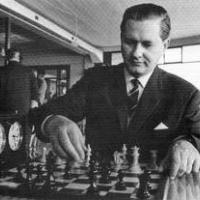
Attack and Defense, Part Two
In the first part of this article we discussed how dangerous a Knight can be if it is placed on the 'magic' f5 square (f4 for Black). As you could see in the games we analyzed there, the main danger coming from such a Knight is the coming sacrifices on the g7 and h6 squares. Naturally, there should be some sort of a defense against such a monster.
The famous Estonian GM Paul Keres has left a huge chess heritage. Even his very last tournament game, that he played just a couple of days before his untimely death, shows a very interesting idea. Look at the following diagram. Black's position looks very dangerous, to say the least. White is about to sacrifice his Knight on h6 to open a direct path to the Black King, followed by a deadly Rook lift to g3. But with a couple of precise prophylactic moves, Black quickly repels White's attack and firmly grabs the initiative.
Of course chess players noticed such an interesting idea: to overprotect the h3 (h6 for Black) square and prepare g2-g3 (g7-g6 for Black) to kick the dangerous Knight away. In the next game Anatloy Karpov - one of the best prophylactic players in chess history, shows how you can successfully fight the monstrous Knight. It looks like the opening clearly ended in Blacks favor who was about to launch a decisive attack on the Kingside. And yet, after the same neat King and Knight maneuver, White slowly outplays his opponent and it is even difficult to point out where Black made his mistakes!
If you still do not appreciate the strength of the Kh2 and Ng1 idea (or Kh7 followed by Ng8), look at the following 'twin' of Karpov's game played by two strong GMs:
Now, dear readers, you know two very useful ideas. One for an attack (Nf5!) and one for a defense (Kh2!,Ng1!). I hope you'll be able to use them in your games!






